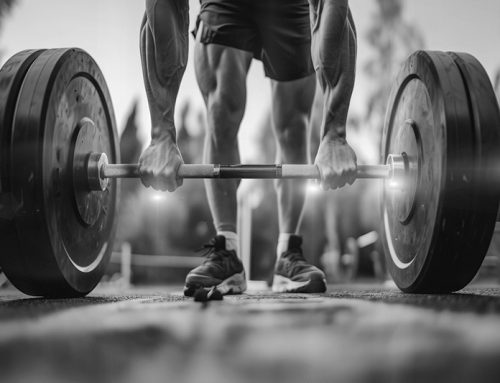If you’re ready to pack on size and build serious muscle, you need more than just time in the gym—you need a strategic plan. Achieving the greatest muscle gains requires a combination of resistance training, proper nutrition, adequate recovery, and consistency. Whether you’re a beginner or an experienced lifter looking to break through a plateau, here’s a detailed breakdown of how to maximize your muscle growth.
Train With Progressive Overload
What It Is: Progressive overload is the gradual increase of stress placed on the body during exercise. Your muscles adapt to resistance over time, so to continue building them, you need to challenge them progressively.
How to Apply It:
- Increase weight: Add 5-10% more weight to your lifts every 1-2 weeks.
- Add reps or sets: If you bench press 3 sets of 8, try moving to 4 sets of 10.
- Slow down tempo: Controlled eccentric movements (like slowly lowering the weight) increase muscle tension and stimulate growth.
- Decrease rest time: Shorter rest intervals (30–60 seconds) can enhance metabolic stress and hypertrophy.
Prioritize Compound Movements
What They Are: Compound exercises involve multiple joints and muscle groups. They build mass efficiently and increase anabolic hormone production.
Key Compound Exercises:
- Squats – targets quads, glutes, hamstrings, and core
- Deadlifts – works the entire posterior chain
- Bench Press – engages chest, shoulders, and triceps
- Pull-Ups/Rows – activates back and biceps
- Overhead Press – hits shoulders and triceps
Tip: Use these as the foundation of your routine. Accessory isolation movements (like curls or leg extensions) are helpful, but secondary.
Eat More—And Eat Right
You cannot build mass if you’re not in a caloric surplus. But it’s not just about quantity—quality matters too.
Nutrition Guidelines:
- Protein: Aim for 1.0–1.2 grams per pound of bodyweight. Lean meats, eggs, whey, legumes, and tofu are excellent sources.
- Carbs: Vital for energy. Whole grains, fruits, sweet potatoes, and rice help replenish glycogen stores.
- Fats: Essential for hormone production. Incorporate avocados, nuts, olive oil, and fatty fish.
- Hydration: Muscles are 70% water. Aim for at least 3 liters/day.
Sample Muscle-Building Meal:
- Grilled chicken breast
- Quinoa or brown rice
- Steamed broccoli
- Avocado
- Protein shake post-workout
Recover Like a Pro
Muscles grow when you rest, not when you train. Overtraining without recovery leads to fatigue, plateau, and even injury.
Recovery Essentials:
- Sleep: Get 7–9 hours per night. Growth hormone is released during deep sleep.
- Rest Days: Take at least 1–2 full rest days per week. Consider active recovery like walking or yoga.
- Stretching & Foam Rolling: Maintain mobility and reduce muscle soreness.
- Deload Weeks: Every 6–8 weeks, reduce volume and intensity to allow your body to reset.
Use Supplements Wisely
While whole food is king, some supplements can support your muscle-building efforts.
Effective Options:
- Whey Protein – Fast-digesting, great for post-workout recovery.
- Creatine Monohydrate – Increases strength and muscle size by drawing water into the muscles and enhancing ATP production.
- Branched-Chain Amino Acids (BCAAs) – May help reduce muscle breakdown during intense training.
- Fish Oil – Reduces inflammation and supports joint health.
Note: Always prioritize a balanced diet before relying on supplements.
Stick to a Smart Training Split
How often you train and how your workouts are structured matter. Avoid random sessions.
Popular Training Splits:
- Push/Pull/Legs – Great balance of volume and recovery
- Upper/Lower – Ideal for 4-day training routines
- Bro Split (Chest, Back, Legs, Shoulders, Arms) – Works if you train 5–6 days a week
- Full Body – Perfect for beginners or those training 3 times/week
Pro Tip: Whatever split you choose, train each muscle group at least twice per week for optimal hypertrophy.
Track Your Progress
Gains are hard to measure if you’re not tracking them.
What to Track:
- Weight lifted (for each exercise)
- Sets and reps
- Body weight and measurements
- Progress photos
- Nutrition and calorie intake
Why It Matters: Tracking helps you identify what’s working and when adjustments are needed. Use apps like MyFitnessPal or a simple journal.
Mind the Mind-Muscle Connection
Too often, lifters move the weight without properly engaging the muscle.
How to Improve It:
- Slow down your reps
- Focus on squeezing the muscle at peak contraction
- Avoid momentum; control each phase of the lift
Developing a strong mental connection with your target muscles ensures you’re stimulating growth where you want it.
Final Thoughts
Muscle building is a marathon, not a sprint. If you want the biggest muscle gains, the keys are consistent training with progressive overload, proper nutrition, quality recovery, and long-term discipline. Skip the shortcuts. Avoid comparing your progress to others. Your commitment and strategy will yield results with time.
Now grab that barbell, eat your meals, and grow.





